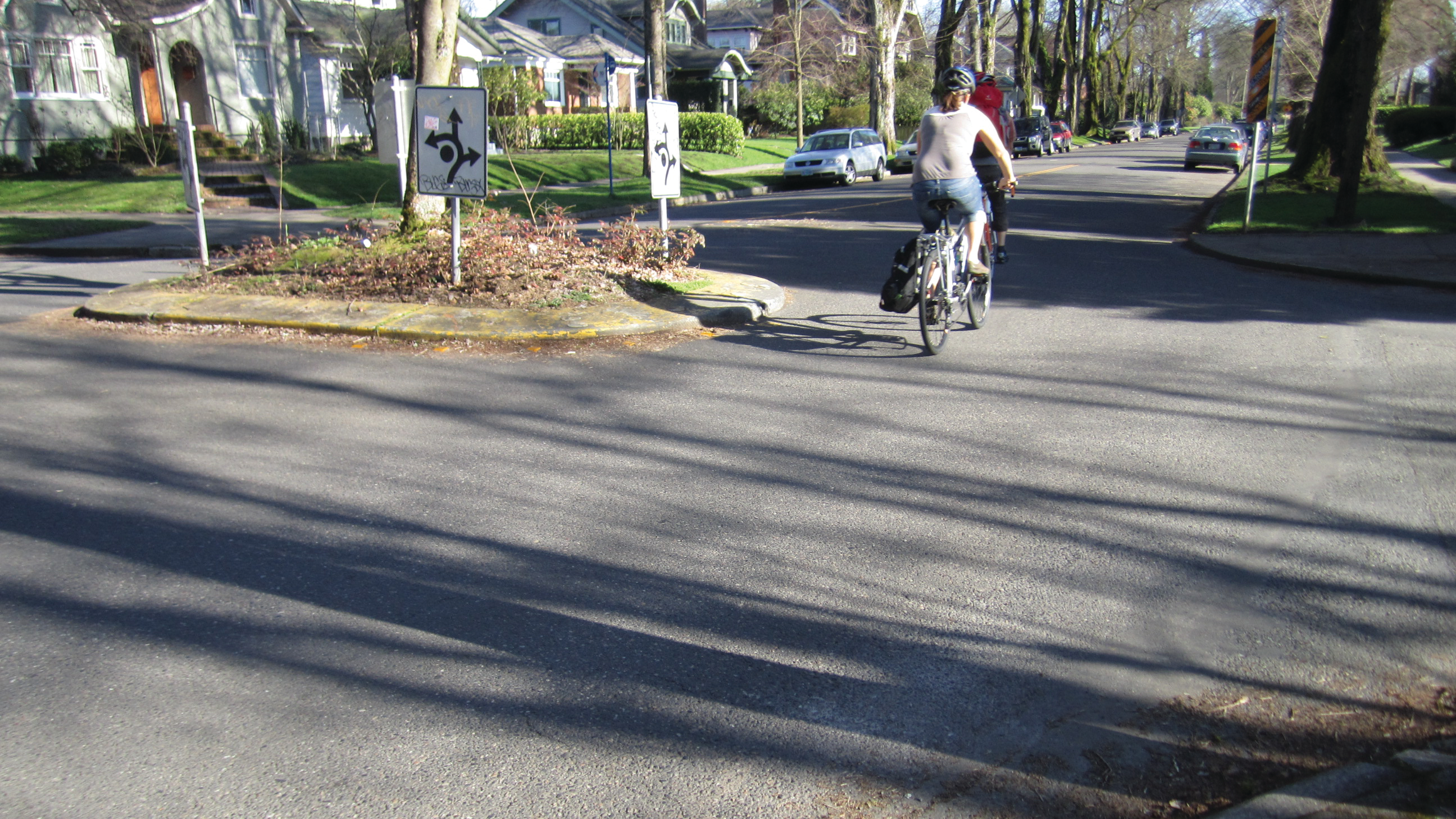Mini roundabouts, also known as neighborhood traffic circles, lower speeds at minor intersection crossings and are an ideal treatment for uncontrolled intersections. Mini roundabouts may be installed using simple markings or raised islands, but are best applied in conjunction with plantings that beautify the street and the surrounding neighborhood. Careful attention should be paid to the available lane width and turning radius used with traffic circles.
Recommendations

1Mini roundabouts have been shown to increase safety at intersections. Crosswalks should be marked to clarify where pedestrians should cross and that they have priority.1 ADA-compliant ramps and deflector strips are required.
2Shared lane markings or intersection-crossing markings guide bicyclists through the intersection. Where a bicycle boulevard turns at a minor intersection, use bicycle wayfinding route markings and reinforce route direction using shared lane markings.
3A mini roundabout on a residential street is intended to keep speeds to a minimum. Provide approximately 15 feet of clearance from the corner to the widest point on the circle.
4Shrubs or trees in the roundabout further the traffic calming effect and beautify the street, but need to be properly maintained so they do not hinder visibility.

- Walking Info. “Neighborhood Traffic Circles, Seattle WA.” Accessed April 9, 2012. www.walkinginfo.org/pedsafe/casestudy.cfm?CS_NUM=56. ↩︎